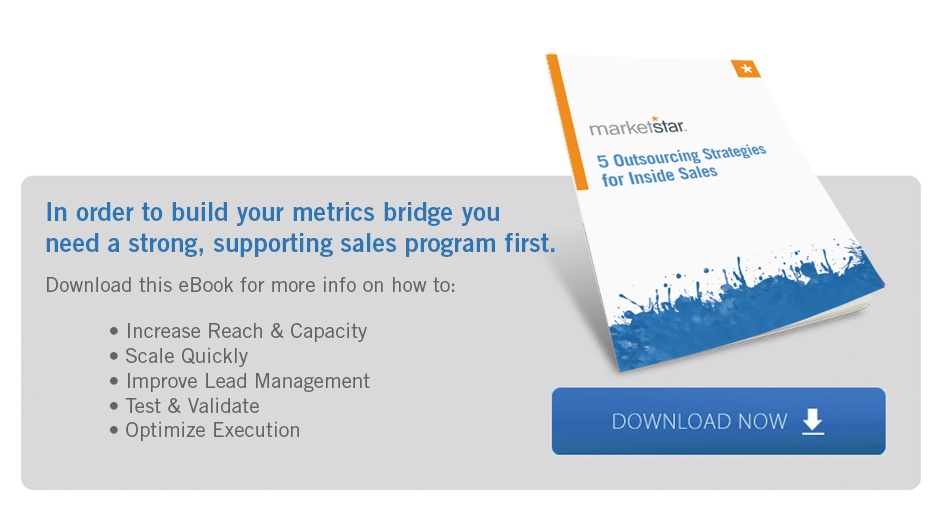The Golden Gate Bridge in San Francisco is both a well-known landmark and a display of prowess in modern engineering. Roughly 39 million vehicles successfully cross this bridge each year.
Sales metrics in day-to-day business work in much the same way as the Golden Gate. Dynamic teams, high-performing strategies, and adequate metrics are all core components to a successful sales motion. Similar to the supports, anchorages, and suspended cables that support the weight of traffic moving across the bridge, there are metrics that need to be tracked and analyzed to better support your sales motion.
This “metrics bridge” helps companies identify their performance points of interest and achieve their performance goals.
Step 1: Effort Metrics
How can a team hit top-line goals if they aren’t frequently updated on their performance? That’s where these metrics come into play. While effort metrics are basic, they are a key support to the other three metric categories – especially when it comes to enablement metrics. From contacts created to hours worked, sales managers get a deeper look into the rep performance and ability with these metrics.
Step 2: Enablement Metrics
Enablement metrics measure activities that companies use to determine success on the next two metric categories. For example, understanding the quality and size of deals added to a pipeline (indicator metric) isn’t possible without having the adequate enablement metrics in the system. This information includes most profiling info, including the account contact, products purchased, trainings held, e-mail blasts sent, etc.
Step 3: Indicator Metrics
As we dive into a more detailed metric category, indicator metrics show the progress of a sales program. These metrics should always be at-the-ready to show whether the day, or week, was successful. Common indicator metrics that businesses use are deals that have been added to a pipeline, deals that have closed, and partners added to a recruitment pipeline.
Step 4: Customer Advocacy Metrics
These are metrics that matter to the business itself. They determine the success of the sales motion. Revenue is a common high-level metric that is important to many companies. But other metrics that are important to monitor in sales motions can include deals closed, resellers profiled, resellers recruited, leads generated, etc. These are all high-level stats that help companies determine the success of a sales motion, and the previous three metric categories contribute to the success of customer advocacy metrics.
Like cables and supports on the Golden Gate Bridge, each metric category is a necessary support in the sales process. If effort metrics are not placed correctly or falter in any way, then the flow in the sales process is hindered, causing delays in reaching the customer advocacy metrics. Tracking metrics in this manner helps managers understand where focus is needed to drive success.
Once a metric bridge is running full capacity, the sales team receives deeper visibility into successes and pain points. Along with visibility, it is also important to make sure your reps understand the metric system you put in place. While this may sound obvious, it’s surprising how often it’s overlooked. It’s vital to manage each sales rep in each metric category individually. This helps sales managers ensure metric performance at the team level – driving individual rep performance.
See how MarketStar can help with your inside sales, partner channels, customer success teams, and digital ad sales.








